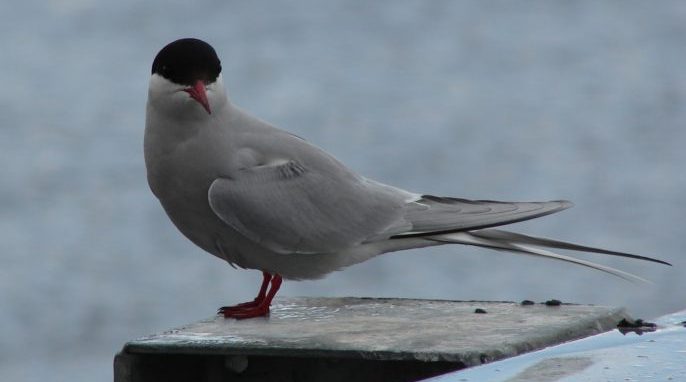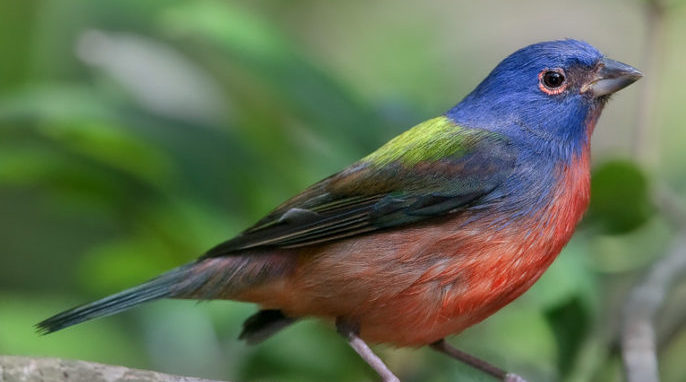When the terns are in the Antarctic, the average temperature is -2˚C to 2˚C (28.4°F to 35.6°F). This is hardly a balmy vacation destination for the tern. The temperatures in both its breeding grounds and wintering grounds would require the terns to have elaborate temperature-control and energy-saving adaptations. Therefore, inability to tolerate cold temperatures is not the reason for migration, at least not for many birds.

The food-availability hypothesis is supported by certain types of migration that are common in North America. Irruptive migration is characterized by a population moving to another place, but there is no yearly, seasonal, or geographic pattern. The birds may migrate one year, then not again for over 10 years, or they might migrate for several years in a row. North American seed-eating birds are famous for these migrations. The distance and number of individuals that migrate are not very predictable, and this also makes it sound like the movement is linked to food availability. However, the migration could also occur to escape some population explosion in a predator species or for some other reason.
Another type of migration is partial migration, a pattern wherein not all birds of a species in a certain location will migrate; only some of them leave during nonbreeding times, while others stick around all year. Food may be available for some but not all, or the environment may be unsuitable for some weaker individuals to forage for a sufficient amount of food. These and other reasons might explain why partial migration exists, but one question remains: Who stays and who goes? The choices could be based on age, altruism, suitability, dominance, laziness, or other reasons.
Birds are not the only animals that migrate. Mammals move from place to place, sometimes with a defined pattern during the year, but sometimes they just follow the food, a process called random migration. And some insects migrate as well. For many years, the migration of the monarch butterfly was believed to be the longest insect migration. But this is not the typical migration we think of, where an individual moves from one place to another and then back again. The migration of the monarch butterfly takes four generations to complete. Some generations are born and fly a long distance to lay their eggs, while others are born, live, and reproduce in a small area. But altogether, this butterfly moves from as far north as Canada to the high mountains of Mexico and back each year, about 7,000 km (4,400 mi).
A few years ago, a biologist in the Maldive Islands started to wonder about the movement of globe skimmer dragonflies where he lived. They seemed to be plentiful in some periods and absent in others. He started to track them and found that they have an even larger migration pattern than the monarch butterfly. What is more, they fly long distances over the ocean with no place to stop and rest.
Over a series of generations, the dragonflies move from India to the Maldives, some 600 to 800 km (311 to 497 mi) across the open sea. Then they move to east Africa, from Uganda to Kenya and Mozambique. In January, they start back toward India and complete their migration of more than 18,000 km (over 11,000 mi).
So birds may get most of the publicity, but insects hold their own in the migration game. Of course, it does take four generations of dragonflies or butterflies to make their complete journey, while a single arctic tern may make its entire 20,000-mile trip 30 times in its lifetime. They are all pretty impressive when you consider that most people need a car to go down the street to the grocery store and back.
References
Davenport LC, Goodenough KS, & Haugaasen T (2016). Birds of Two Oceans? Trans-Andean and Divergent Migration of Black Skimmers (Rynchops niger cinerascens) from the Peruvian Amazon. PloS one, 11 (1) PMID: 26760301
Ahola MP, Laaksonen T, Eeva T, & Lehikoinen E (2007). Climate change can alter competitive relationships between resident and migratory birds. The Journal of animal ecology, 76 (6), 1045-52 PMID: 17922701
Hobson KA, Anderson RC, Soto DX, & Wassenaar LI (2012). Isotopic evidence that dragonflies (Pantala flavescens) migrating through the Maldives come from the northern Indian subcontinent. PloS one, 7 (12) PMID: 23285106
About the Author
Mark Lasbury, MS, MSEd, PhD, is a science and history writer based in Indianapolis, IN. He is the author of more than fifty peer-reviewed scientific articles, two textbook chapters concerning molecular diagnostics in hematology, and several articles on local Indiana history. He has taught life sciences at the secondary, college, graduate, and postgraduate levels; authors a life sciences education blog, As Many Exceptions As Rules; and is cofounder of the pop culture science blog, The ‘Scope. His book on the research bringing Star Trek technologies to the real world will be published in mid-2016 by Springer Publishing.
GotScience.org translates complex research findings into accessible insights on science, nature, and technology. Help keep GotScience free: Donate or visit our gift shop. For more science news subscribe to our weekly digest.




